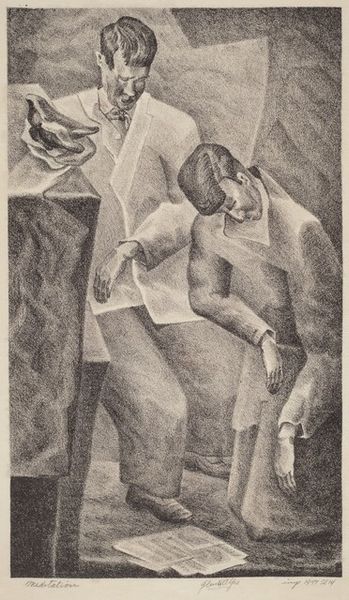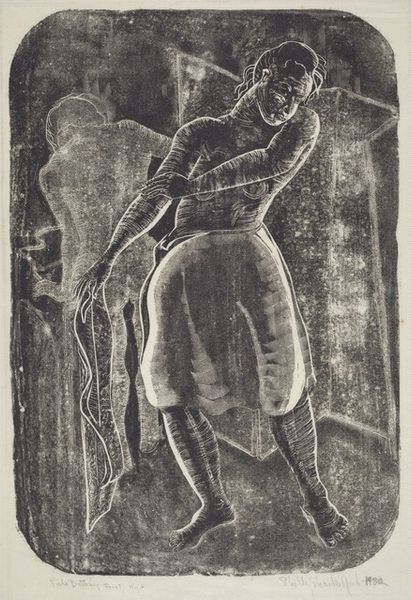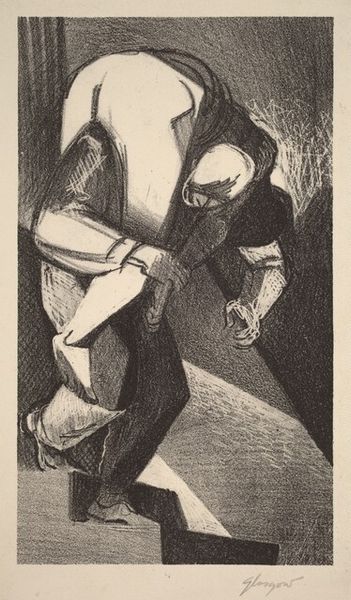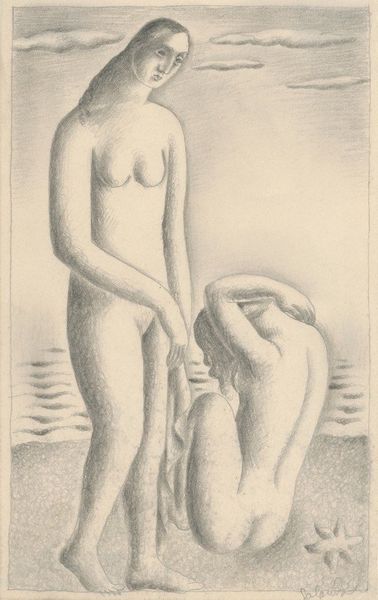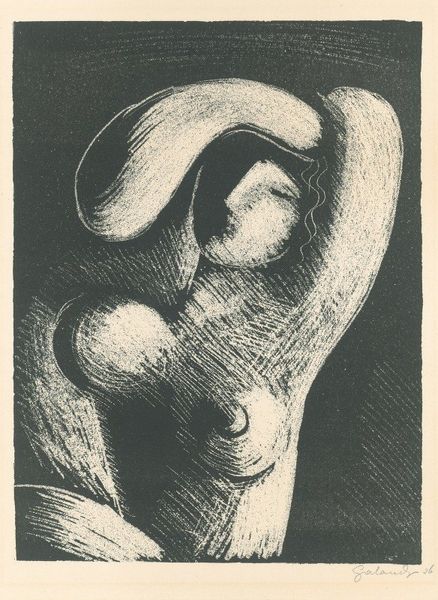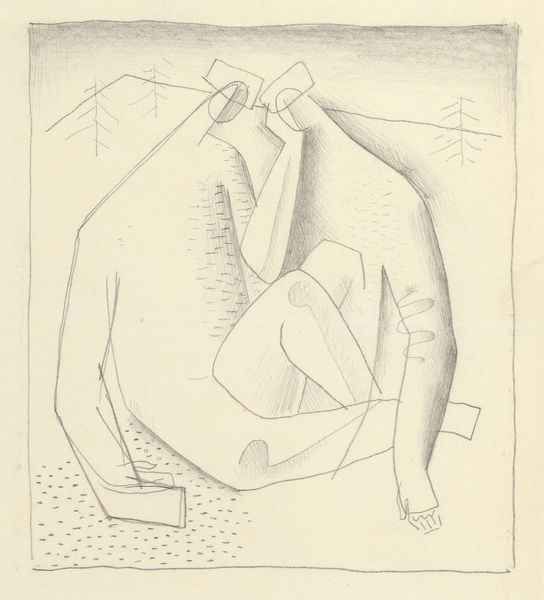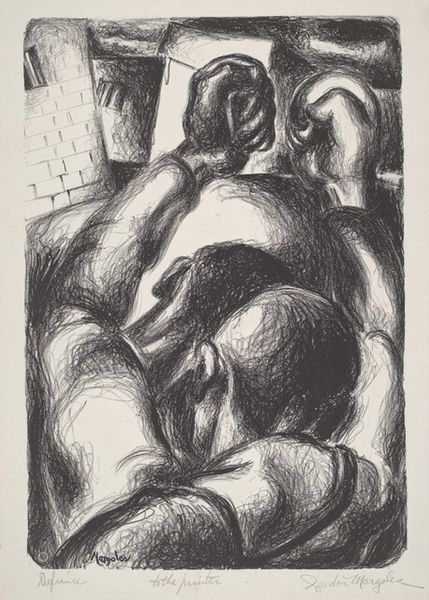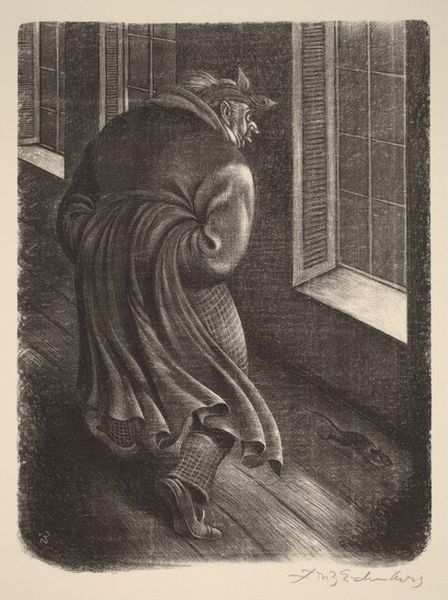
drawing, print, charcoal
#
portrait
#
drawing
# print
#
charcoal drawing
#
figuration
#
pencil drawing
#
charcoal
#
modernism
Dimensions: image: 34.93 × 17.46 cm (13 3/4 × 6 7/8 in.) sheet: 40.16 × 28.58 cm (15 13/16 × 11 1/4 in.)
Copyright: National Gallery of Art: CC0 1.0
Curator: "A Distinguished Audience" by Alexander Zerdin Kruse, created around 1930. The piece is a modernist portrait rendered in charcoal, primarily as a print. What strikes you most immediately about it? Editor: The composition feels immediately unsettling, yet controlled. The juxtaposition of the clergyman's placid countenance with the hand-standing boy—is that a power dynamic at play? What are your initial thoughts on the technique itself? Curator: The texture is what initially draws my focus; the artist’s command of charcoal. You can feel the texture of the paper, the layering of the pigment to create depth, the varying pressure he used to describe form, and even the craft inherent in printmaking elevates the piece. It feels very tactile, almost sculpted. I am very curious what its statement on religious structures during the modern era are, though? Editor: Right! Kruse seems to be questioning traditional hierarchies here. The Bishop, a figure of established authority, observes passively while a young person literally upends himself—his perspective. Perhaps it is about the way new generations challenged and questioned the Church. The title drips with irony too. The child is also being presented like entertainment in front of some “distinguished audience”, creating an analogy between religion, institutions and exploitation. Curator: Exactly. Consider the paper and ink used in mass-produced prints—a stark contrast to, say, oil on canvas commissioned by the Church itself during the Renaissance. Here, Kruse employs accessible materials, subverting established systems of artistic patronage and value. This is also the time of technological progress, urbanization and political conflict so that's always a very good time to make bold statements on structures of power, and explore other perspectives on art and how it should be done. Editor: And that subversion makes the work inherently political. By visually disrupting traditional notions of authority and viewership, Kruse forces us to question the roles and power structures at play, both in the depicted scene and within the broader social context of the time. Curator: In effect, Kruse acknowledges his labor to comment about hierarchies of value inherent within both art production and societal systems and critique both. I agree with that, and it helps create context for the art, especially considering when it was made. Editor: Ultimately, this piece, both formally and conceptually, challenges us to examine the systems of power that shape our understanding of art and society. It is unsettling. Curator: I’ll leave appreciating the charcoal's mark-making then; that’s my truth to beauty with this drawing today.
Comments
No comments
Be the first to comment and join the conversation on the ultimate creative platform.
